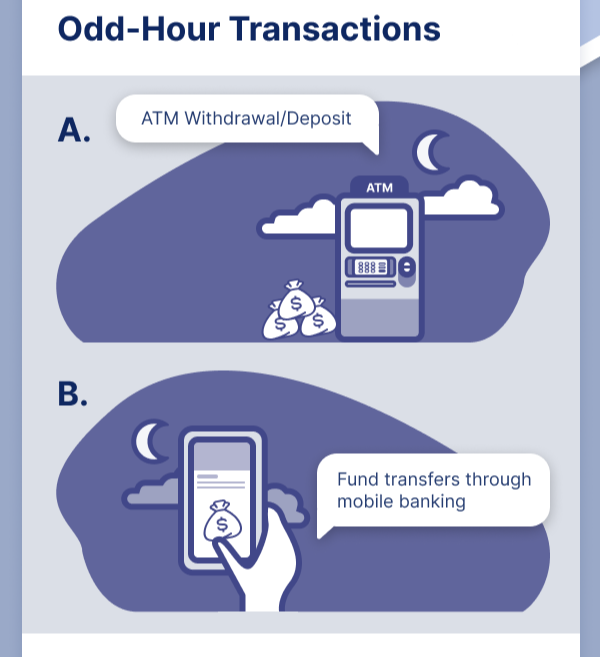In today's rapidly changing financial world, the landscape of transactions is evolving at an unprecedented pace. With the advent of digital currencies, online banking, and globalized financial markets, the volume and complexity of transactions have skyrocketed. This evolution, while bringing numerous advantages, has also ushered in a plethora of regulatory challenges. Financial institutions and regulators are constantly grappling with the task of ensuring that these transactions are compliant, transparent, and free from illicit activities.
However, as we navigate this intricate web of modern financial transactions, we find that traditional systems, particularly rule-based ones, are increasingly falling short. These systems, which once stood as the bedrock of financial monitoring, are now struggling to keep up with the sheer volume and intricacy of today's transactions. Their design, rooted in a time when transactions were simpler and fewer, often leads to a high number of false positives and misses genuinely suspicious activities. The rigidity of rule-based systems, where predefined rules trigger alerts, lacks the flexibility needed to understand the nuances and patterns of contemporary financial behaviours.
In essence, while the world of finance has undergone a metamorphosis, adapting to the digital age and global connectivity, our traditional systems remain anchored in the past. This disparity not only hampers effective monitoring but also exposes institutions to potential regulatory pitfalls and reputational risks. As we delve deeper into this topic, we'll explore how a new approach, centered around typologies, offers a promising solution to these challenges.
The Shortcomings of Rule-Based Systems
Rule-based systems, as the name suggests, operate based on a predefined set of rules. These systems trigger alerts or actions when specific conditions, as outlined by these rules, are met. Historically, such systems have been the backbone of many financial monitoring processes, offering a structured approach to detect anomalies or suspicious activities. However, their design is inherently rigid. They lack the adaptability to understand the context or the evolving nature of transactions. This rigidity often results in two major issues: a high number of false positives, where legitimate transactions are flagged, and false negatives, where genuinely suspicious activities go unnoticed.
Real-World Examples Showcasing the Pitfalls of Relying Solely on Rule-Based Systems
- High-Volume Transactions: A rule might flag all transactions above a certain threshold, say $10,000, as suspicious. However, for a large corporation, such transactions might be routine. This results in numerous false positives, burdening compliance teams with unnecessary reviews.
- Emerging Digital Currencies: Traditional systems might not have rules tailored for transactions involving cryptocurrencies. As a result, potentially illicit activities involving digital currencies might go undetected.
- Cross-Border Transactions: A rule-based system might flag all international transactions from certain high-risk countries. However, with globalization, businesses often have legitimate reasons for such transactions, leading to false alarms.
The Challenges Posed by the Growing Complexity of Financial Transactions
The financial world is no longer limited to traditional banking and straightforward transactions. Today, we have a plethora of financial instruments, digital wallets, peer-to-peer lending platforms, and more. Each of these brings its own set of complexities. For instance:
- Diverse Transaction Channels: With the rise of online banking, mobile wallets, and fintech platforms, transactions can originate from various channels, each with its unique patterns and behaviors.
- Sophisticated Money Laundering Schemes: Criminals are employing more intricate methods to launder money, often using a series of small transactions to fly under the radar of rule-based systems.
- Globalized Financial Landscape: Money can now flow across borders with ease, involving multiple currencies, intermediaries, and regulations. This global nature adds layers of complexity that traditional rule-based systems are ill-equipped to handle.
Typologies: The Evolutionary Response to Regulatory Challenges
In the face of evolving financial threats and the limitations of rule-based systems, the financial sector has turned to typologies as an advanced solution. But what exactly are typologies? At their core, typologies are behavioural patterns or models that represent specific types of financial activities, both legitimate and suspicious. Unlike rigid rules, typologies are dynamic, adapting to the ever-changing landscape of financial behaviours. They play a pivotal role in Anti-Money Laundering (AML) and fraud detection by capturing the essence of transactional behaviours, allowing institutions to identify and understand complex financial patterns that might indicate illicit activities.
Practical AML and Fraud Examples Illustrating the Effectiveness of Typologies
- Layering in Money Laundering: One common money laundering technique is 'layering,' where illicit funds are moved through various accounts to obscure their origin. While individual transactions might not trigger any rule, a typology can recognize the pattern of rapid, circular movements of money, flagging it for review.
- Bust-Out Fraud: In this scheme, fraudsters build a good credit history with a bank, only to max out their credit and disappear. A typology can identify the sudden spike in credit usage following a period of responsible behavior, signaling potential fraud.
- Trade-Based Money Laundering: Here, trade transactions are manipulated to disguise the movement of money. While each trade might seem legitimate, a typology can detect inconsistencies in trade values, quantities, or frequencies that don't align with typical business activities.
The Flexibility and Accuracy Offered by Typologies in Navigating Regulatory Challenges
Typologies bring a level of sophistication to financial monitoring that traditional systems can't match. Their strengths lie in:
- Adaptability: As financial behaviors evolve, typologies can be refined and updated, ensuring they remain relevant and effective.
- Reduced False Positives: By understanding the context and nuances of transactions, typologies can drastically reduce the number of false alarms, streamlining the compliance process.
- Holistic View: Instead of looking at transactions in isolation, typologies consider the broader pattern, offering a more comprehensive view of financial activities.
In essence, typologies represent the next frontier in financial monitoring, providing the tools needed to navigate the complex regulatory challenges of today's financial world with precision and agility.
Privacy-Protected Nature of Typologies
At the heart of typologies lies a unique design that focuses on patterns rather than raw data. These patterns are abstract representations of transactional behaviors, capturing the essence without holding onto specific details. This design ensures that while the core information is retained, individual specifics that could compromise privacy are not. It's akin to understanding the rhythm of a song without knowing the lyrics.
How Typologies Ensure Data Privacy and Security
- No Personal Identifiable Information (PII): Typologies are constructed without storing any PII. This means that while they can identify suspicious patterns, they don't hold onto names, account numbers, or other sensitive details.
- Encryption and Anonymization: Any data that contributes to the formation of a typology is encrypted and anonymized, ensuring that even if there's a breach, the data remains unintelligible.
- Regulatory Compliance: Typologies are designed keeping in mind global data protection regulations. Their structure inherently complies with guidelines that prioritize user privacy, such as the GDPR.
The Distinction Between Raw Data and Typological Patterns
Raw data is like the detailed script of a play, containing every line, direction, and nuance. In contrast, a typology is like a summary or a review of that play. It gives you the gist, the overarching theme, and the patterns without delving into specific dialogues. This distinction is crucial in understanding the non-invasive nature of typologies:
- Data Minimization: Typologies operate on the principle of data minimization, capturing only what's necessary and discarding the rest.
- Focus on Patterns, Not Details: While raw data might tell you that "John transferred $5000 to Jane," a typology would only note a "high-value transfer between two entities," keeping the identities anonymous.
- Enhanced Privacy without Compromising Efficiency: The beauty of typologies lies in their ability to protect user privacy without hampering their primary function – detecting suspicious activities.
In conclusion, typologies represent a paradigm shift in how we approach financial monitoring. They offer a robust solution that not only addresses the challenges of modern financial systems but does so while placing user privacy at the forefront.
Promoting Collaboration with Typologies in Tookitaki's AFC Ecosystem
Typologies, with their pattern-centric approach, serve as a common language in the financial world. They encapsulate complex financial behaviors into understandable models, making it easier for different entities to discuss, share, and collaborate on AML/CFT initiatives. By focusing on patterns rather than specifics, typologies eliminate barriers, allowing for open dialogue without the risk of data breaches or privacy concerns.
How the AFC Ecosystem Leverages Typologies for Enhanced Collaboration Among Stakeholders
- Unified Database - The Typology Repository: The AFC Ecosystem's Typology Repository acts as a central hub where institutions, regulatory bodies, and experts can contribute and access a vast array of typologies. This repository promotes collaborative learning and sharing, ensuring that all stakeholders benefit from collective knowledge.
- AFC Network's Role: The AFC Network, a global consortium of subject matter experts, actively contributes to and refines the typologies in the repository. This continuous feedback loop ensures that the typologies remain relevant and up-to-date.
Illustration of a Typology

Final Thoughts
In the ever-evolving landscape of financial transactions, typologies have emerged as a beacon of clarity. They address the inherent limitations of traditional rule-based systems, offering a dynamic and flexible approach to detect and prevent financial crimes. By encapsulating complex financial behaviours into understandable patterns, typologies provide institutions with a robust tool to navigate the intricate maze of regulatory challenges, ensuring compliance while enhancing detection capabilities.
To financial institutions worldwide: The challenges posed by modern financial systems are multifaceted, and the stakes have never been higher. Embracing typologies is not just a strategic move; it's a necessity. By integrating typologies into your AML and fraud detection frameworks, you arm yourself with a shield that is both resilient and adaptive. It's an invitation to be part of a collaborative effort, to learn from global experiences, and to fortify your defences against the ever-growing threats of financial crimes.
As we look to the horizon, the future of AML and fraud detection is promising. The integration of typologies signifies a shift from reactive measures to proactive strategies. With the collective knowledge of global experts, the power of collaboration, and the precision of typologies, we are poised to usher in an era where financial institutions are not just compliant but are vanguards in the fight against financial crime. The journey ahead is collaborative, and typologies are the compass guiding us towards a safer financial world.
Anti-Financial Crime Compliance with Tookitaki?



